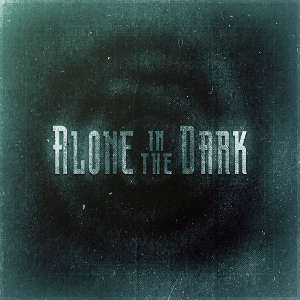Alone in the Dark Original Soundtrack
 |
Album Title: Alone in the Dark Original Soundtrack |
| Record Label: Good Old Games |
|
| Catalog No.: N/A |
|
| Release Date: April 14, 2011 |
|
| Purchase: Download with Game at GOG |
Overview
1992’s Alone in the Dark was pioneering game in a number of ways: it boasted three-dimensional graphics, incorporated ambient sound design, and, most importantly, popularised the horror genre. The music and sound effects for the title were created by French composer Philippe Vachey — at the time an in-house composer of developer Infogrames — and was widely praised for a number of reasons. Whereas the PC version featured a MIDI soundtrack, the 3DO version allowed 30 minutes of CD quality tracks to be streamed as redbook audio. Like most soundtracks back in the day, neither soundtrack was made available as a wider album release. Website GOG.com recently changed this by releasing a downloadable trilogy of the first three games in the Alone in the Dark series. Among the bonus goodies of this generously priced release were the soundtracks for each of the three games.
Body
Though still limited by the synthesizers of the day, Philippe Vachey accompanied the various scenes of Alone in the Dark with suitable music. The title theme “In the Eye of the Storm” prepares listeners for the horror ahead with a rich orchestration. Vachey incorporates lot of horror staples here — piano discords, pizzicato strings, and orchestral build-ups, to name a few — in an elaborate but typical way. While this may turn off some listeners today, it was exceptional for game composers to convincingly emulate film scores back in 1992. While this piece and others were heavily downgraded for the original PC release — to relatively shallow effect — the 3DO version featured on this soundtrack captures all the intricacies and depths of the original.
Vachey ncorporates many ideas from the title theme into the main background music, “I’m Not Afraid… I Think” too. The way the track builds up from its frivolous introduction towards its orchestral climax is breathtaking. In context, these build-ups are generally not synchronised with monster encounters and instead serve to keep listeners on edge. Once again, this effect is especially magnified on the 3DO version — where the instruments sound much more realistic and punctuated than the fragile MIDI version. The menu theme, “Alone in the Dark”, is comparatively liberating with its soft timbres and jazzy rhythms; but even this track creates tension through the fleeting appearances of malevolent forces, notably the organ.
The most horrifying tracks are reserved for the enemy encounters. The piercing orchestration of “The Battle Against Evil” encourages players to run for their lives. It’s hard to believe that Vachey received no musical training, as his dissonant and percussive writing here has such an avant-garde leaning. “Run for Your Life” takes a more psychological approach with its slow-building eerie sounds, while the short tracks “The Enemy” and “Deadly Spiders” are intended to make players jump out of their seats. Though these tracks are all solid and effective compositions, they will appeal even less on a stand-alone basis than the main themes. It’s fascinating and awe-inspiring to recollect what Vachey achieved, but this was never intended to be background listening.
The soundtrack is rounded off by a few more experiments. “Growing Fear” and “Watery” are about as ambient as the soundtrack gets — blurring the boundaries of music and sound design with their use of atmospheric noise. But again, they are so creatively produced that they have a profound effect in the game. There are also three tracks featuring synthesized versions of piano pieces, namely Strauss’ “The Beautiful Blue Danube”, Chopin’s “The Farewell Waltz”, and Saints-Saens’ “Danse Macabre”. With their faux-gramophone sound, these tracks are excellently incorporated into the game. There are also two short but effective ending themes — a morbid strings piece for a bad outcome and a uplifting jazz fusion piece for a happy outcome.
Summary
In many ways, the audio of Alone in the Dark was more important than the visuals in terms of creating tension and horror. This is partly because music tends to inspire emotions more readily than visuals, but it also reflects the creativity and skill of its composer Philippe Vachey. When the visuals and audio are paired together, Alone in the Dark proves a truly immersive experience. While the soundtrack is excellent in context, it isn’t recommended or intended for bedtime listening — it is dissonant, ambient, and often derivative. However, those that purchase the Alone in the Dark trilogy from GOG.com should check out these tracks at least once to gain a further appreciation of the creativity that went into this pioneering game.
Do you agree with the review and score? Let us know in the comments below!
3.5
Posted on August 1, 2012 by Chris Greening. Last modified on January 18, 2016.














